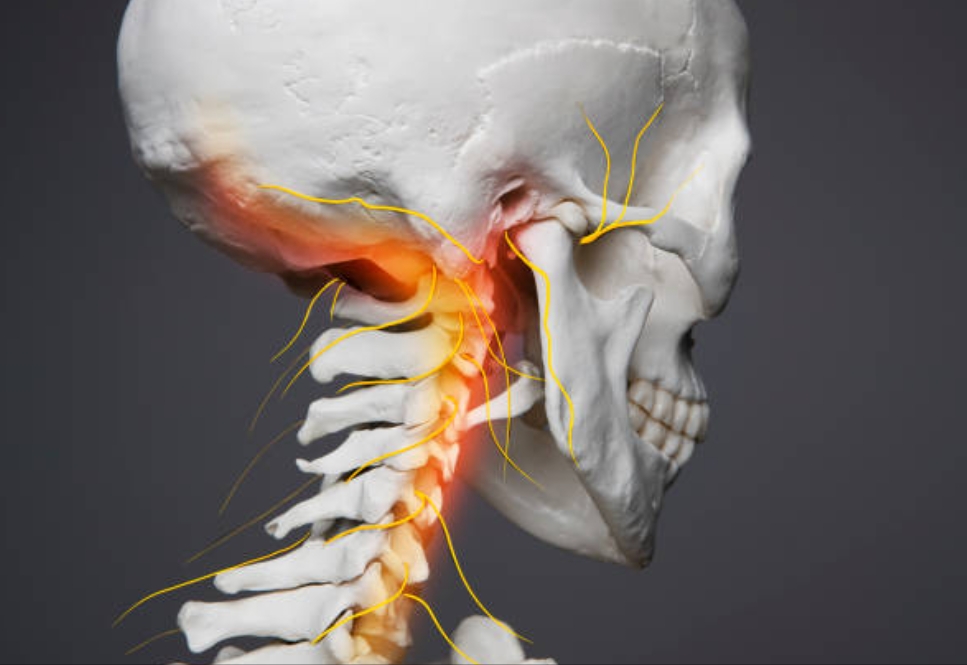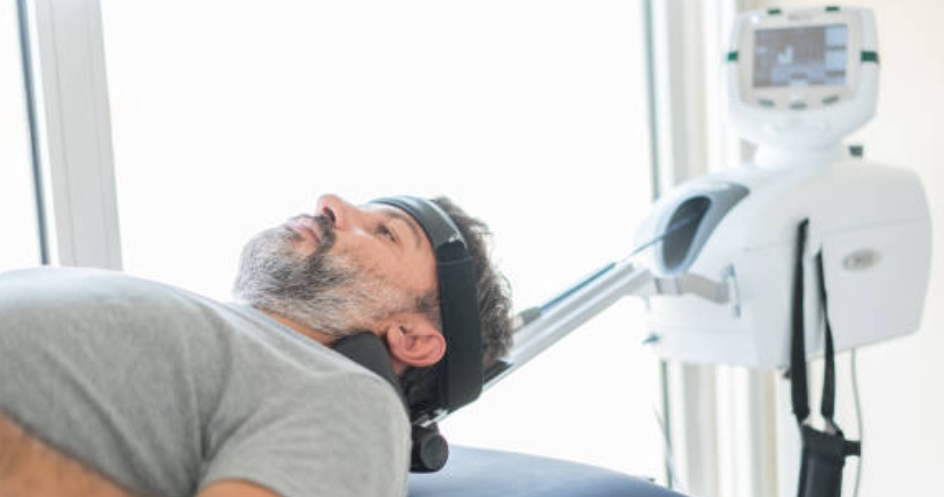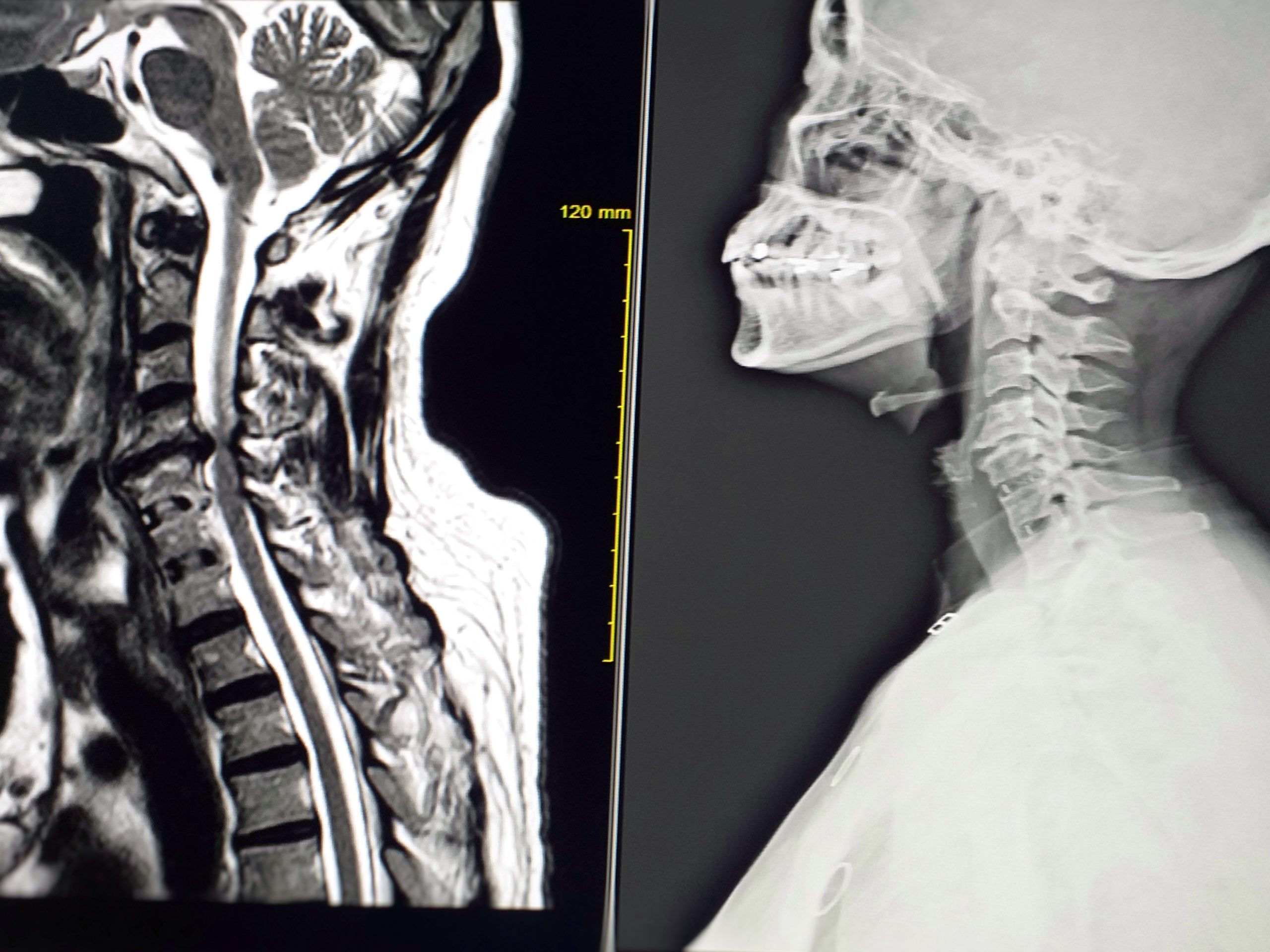Purpose of Transverse Ligament Stress Test: To test the stability (hypermobility) of the atlantoaxial articulation and the integrity of the supporting transverse ligament (1, 2).
Patient position: Supine lying with the head rested on the examination table (supported by a pillow) in neutral alignment.
Examiner position: Standing on the head side while the patient is lying supine.
Procedure:
Give gentle support to your patient’s occiput using your palms and the 3rd to 5th fingers of your both hands. Place both index fingers in the space between the occiput and the spinous process of the axis vertebra, so that your index fingers are overlying on the neural arch of the atlas vertebra.
Next, gently lift the patient’s head and the atlas vertebra together anteriorly (ie., vertically off the ground/pillow) while maintaining the head in neutral alignment without allowing for any other neck movements. Hold this position for 10 to 20 seconds.
Outcome:
This test is positive if your patient reports and/or you identify the following symptoms: soft end feel (indicating hypermobility at the atlantoaxial articulation), weakness, numbness, nausea, abnormal pupil response, twitching eyes, nystagmus, lump in the throat, dizziness, and paraesthesia of the lip, face or limbs.
The test is negative if the patient does not experience any of these symptoms and you have a firm end feel during this test.
Additional Notes:
This is a provocative test and thus care should be taken while performing this test. A positive test warrants further imaging and immediate treatment.
The sharp purser test that is intended to relieve symptoms of neurologic compression while testing for the rupture of transverse ligament should be performed prior to this provocative test.
Reference:
- Aspinall W. Clinical Testing for the Craniovertebral Hypermobility Syndrome. Journal of Orthopaedic & Sports Physical Therapy. 1990;12(2):47-54.
- Wise CH, Gulick DT. Mobilization notes: a rehabilitation specialist’s pocket guide: FA Davis; 2009.



